calsfoundation@cals.org
Sonny Burgess (1929–2017)
aka: Albert Austin Burgess
Albert Austin “Sonny” Burgess was best known as one of the original rock and roll recording artists for Sun Records in Memphis, Tennessee, and as one of the pioneers of rock and roll. He and his band, the Pacers, made a hit of his first recording, “Red Headed Woman,” and the flip side, “We Wanna Boogie,” both of which Burgess wrote. The record sold approximately 100,000 copies, a phenomenal number for that era. Burgess and the Pacers performed at various events in the United States and Europe until his death in 2017.
Sonny Burgess was born on May 31, 1929, in Newport (Jackson County). His parents, Albert and Esta Burgess, raised him, his two brothers, and his three sisters on their farm near Newport. Burgess graduated from Newport High School in 1948. In 1950, he and three friends formed a boogie-woogie band they called the Rocky Road Ramblers. Those three friends were Kern Kennedy, Johnny Ray Hubbard, and Gerald Jackson. Both Hubbard and Kennedy became members of the original Pacers. In 2005, Kennedy was still with the Pacers, Jackson was the mayor of Tuckerman (Jackson County), and Hubbard was retired and living in Newport.
In 1954, following a stint in the U.S. Army (1951–1953), Burgess re-formed the band, calling them the Moonlighters after the Silver Moon Club in Newport, where they performed regularly. The Silver Moon was part of a circuit—including the B&I Club, Mike’s 67 Club, and Porky’s Roof Top Club—in the Newport area made by many up-and-coming performers. Stars such as Elvis Presley, Carl Perkins, Charlie Rich, Jerry Lee Lewis, and Conway Twitty got their start on the Newport club circuit.
At that time, Elvis Presley was performing in clubs and school gyms to promote his releases, and the Moonlighters opened for him four times. Elvis liked what he heard and told Burgess the band should go to Memphis and talk to Sam Phillips of Sun Records. They followed his advice, and Phillips told them to get a larger band together and come back. Thus, the Pacers were born, consisting of Kennedy on piano, Hubbard on upright “slap” bass, Russ Smith on drums, Joe Lewis on guitar, and Jack Nance on trumpet. Burgess provided the vocals and played guitar. Lewis came up with the new name for the band, inspired by the Pacer airplane. They played rhythm and blues and boogie-woogie music. Sonny and the Pacers returned to Memphis and recorded “Red Headed Woman” in 1955. The record, personally recorded by Sam Phillips, was released in 1956, and they were on their way to fame.
As popular as their recordings were, these did not compare with the band’s energetic live show, unparalleled by the performers of that era. Their show included gyrating, stage sliding, and acrobatics. They even formed a human pyramid in the center of the dance floor without missing a beat in their music. They also had an act they called “Bug Dance,” in which they jumped into the audience while performing. Burgess was known, too, for his red hair, dyed to match his candy-apple-red Fender guitar and his red suit.
Burgess married Joann Adams in 1956, and they raised two sons, Peyton and John.
Sonny Burgess and the Pacers continued recording with Sun Records until 1959. In those four years, they recorded five singles. In addition to their first record, they recorded “Thunderbird,” “Ain’t Got a Thing,” “My Bucket’s Got a Hole in It,” and “Sadie’s Back in Town.”
Burgess left the band in 1960 and began working with Conway Twitty, who was raised in Phillips County. He left Twitty in 1965 and formed his own band, the King’s Four. In 1972, he got what he called “a real job” as a salesman, and the King’s Four broke up in 1974. Burgess continued working as a salesman and playing music on the side until 1986, when he was invited to a show in Washington DC that included rockabilly music, where he made a big hit. After that, Burgess traveled all over the world and became a sensation in Europe.
In 1999, Burgess was inducted into the Rock and Roll Hall of Fame of Europe. In 1998, the Smithsonian Institution made a video called “Rockin’ on the River” that brought Burgess and the Legendary Pacers together again. In addition to Kennedy, the group now included Bobby Crafford, Jim Aldridge, Fred Douglas, J. C. Caughron, and Charles Watson II. They made two album-length recordings in the late 1990s: They Came from the South and Still Rockin’ and Rollin’. In 2002, they were inducted into the Rockabilly Hall of Fame in Jackson, Tennessee. In 2005, they performed at numerous events in Arkansas, Texas, and Tennessee and toured Europe. Burgess was inducted into the Arkansas Entertainers Hall of Fame in 2007.
Burgess hosted a radio show, We Wanna Boogie, for KASU in Jonesboro (Craighead County). Burgess was awarded an Honorary Doctor of Music degree from Arkansas State University in Jonesboro on May 7, 2011. In 2014, he received the Delta Cultural Center’s Sonny Payne Award for Blues Excellence. Sonny Burgess and the Legendary Pacers were given the Folklife Award by the Arkansas Arts Council, presented at the Governor’s Arts Awards ceremony on March 10, 2016. That same year, in poor heath, he moved to Little Rock (Pulaski County). He died there on August 18, 2017.
For additional information:
Carroll, Scott. “Rockabilly Sound Took Him Far, Wide.” Arkansas Democrat-Gazette, August 20, 2017, pp. 4B.
Escott, Colin. Roadkill on the Three-Chord Highway: Art and Trash in American Popular Music. New York: Routledge, 2002.
Haymes, Linda S. “Albert Austin ‘Sonny’ Burgess.” Arkansas Democrat-Gazette, June 15, 2014, pp. 1D, 8D.
Schwartz, Marvin. “Legacies & Lunch: Sonny Burgess.” September 3, 2014. Central Arkansas Library System, Little Rock, Arkansas. Video online at Butler Center AV/AR Audio Video Collection: Marvin Schwartz Lecture (accessed May 8, 2024).
———. We Wanna Boogie: The Rockabilly Roots of Sonny Burgess and the Pacers. Little Rock: Butler Center Books, 2014.
“Sonny Burgess.” Delta Boogie. http://www.deltaboogie.com/deltamusicians/burgess (accessed May 8, 2024).
Paula Harmon Barnett
McCrory, Arkansas

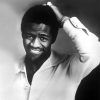

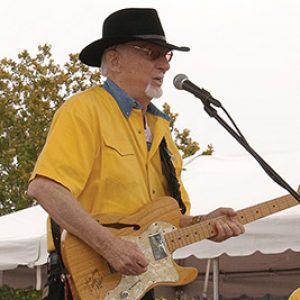 Sonny Burgess
Sonny Burgess 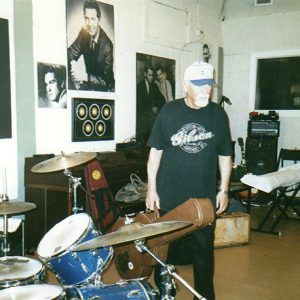 Sonny Burgess at Sun Studios
Sonny Burgess at Sun Studios 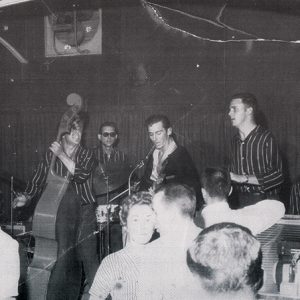 Sonny Burgess & the Pacers
Sonny Burgess & the Pacers 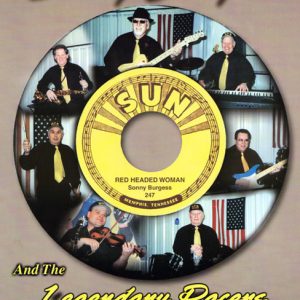 Sonny Burgess Flyer
Sonny Burgess Flyer  Burgess Concert Postcard
Burgess Concert Postcard 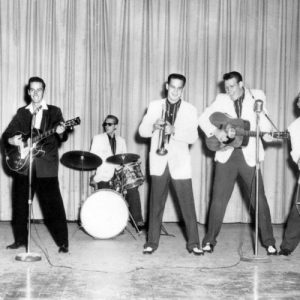 Sonny Burgess and the Pacers
Sonny Burgess and the Pacers 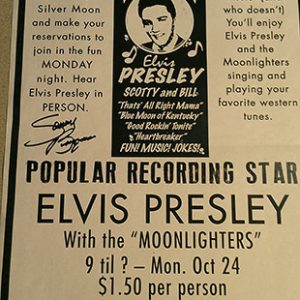 Moonlighters Poster
Moonlighters Poster 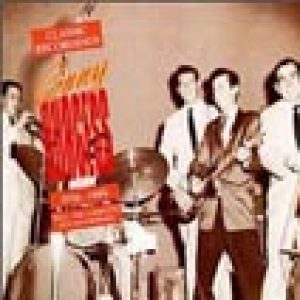 "Red Headed Woman," Performed by Sonny Burgess
"Red Headed Woman," Performed by Sonny Burgess 



In the early 1960s in Newport, the Pacers had been recording for two other record labels and were not happy with them. So they decided to form their own label and release records themselves. Bobby Crafford, Kern Kennedy, J. C. Caughron, and Johnny Hubbard started the company, which released over forty records in the 1960s and 70s. Artists included Jimmy Ray Paulman of North Little Rock, Synette from Searcy, the Pacers, the Selfs, Rick Durham of Little Rock, Sonny Burgess of Newport, the Chessman from Greenville, Mississippi, the Five Rogues from Little Rock, and the famous Gennifer Flowers (at age fourteen). Others were the Dickson Sisters from Dewitt, the Rivermen from Little Rock, Beaver from Mississippi, and Bill McCollun from Mississippi. The label got some radio play from local stations, and in 1965, an idea came up. The Razorbacks were playing well and the year before, two songs had been released about the Hogs. With a big game between Arkansas and Texas coming up on national TV that day, the Pacers went to small studio on Markham and brought in Jim Scott to write the words to a song that had been out on another label, named “Long Tall Texan.” They came up with a song titled “Short Squashed Texan,” vocal by Bobby Crafford. If the Hogs lost, the song would be dead, but Arkansas pulled the game out at the very last. We made copies and took it to radio stations, and they started playing it that very night. We sent a master to Ohio and got records in about 10 days, and Razorback Records had a regional hit. To this day, they still play the song on some of their shows in Arkansas. They re-released it a few years ago on CD when Arkansas and Texas played again.